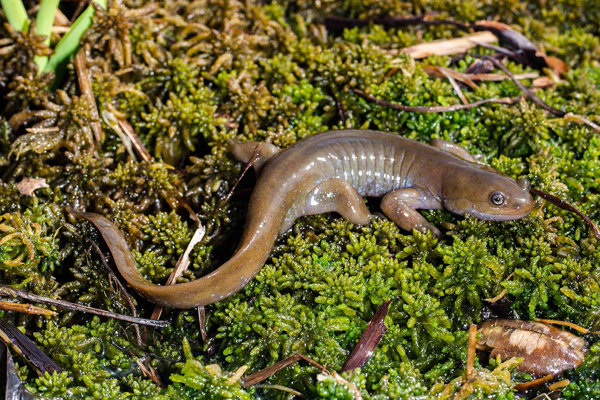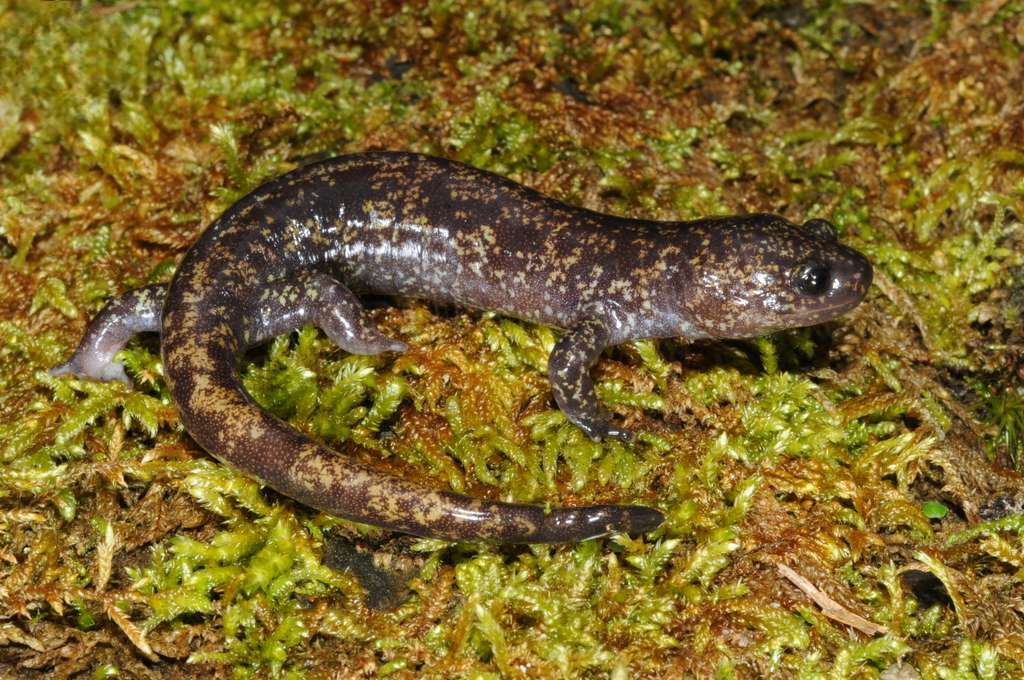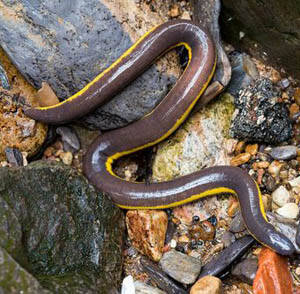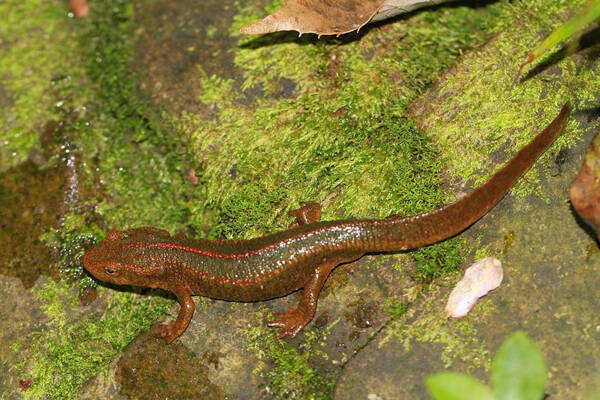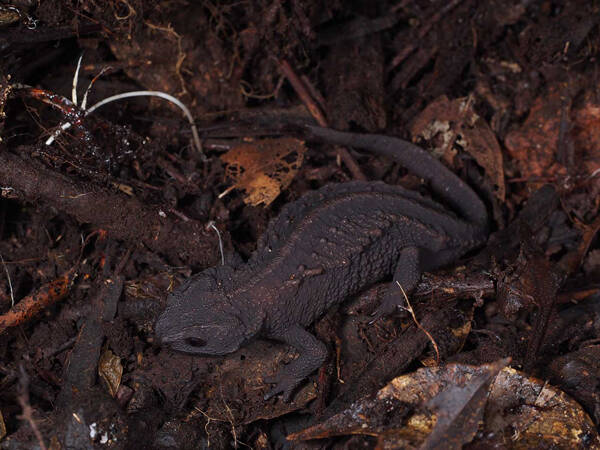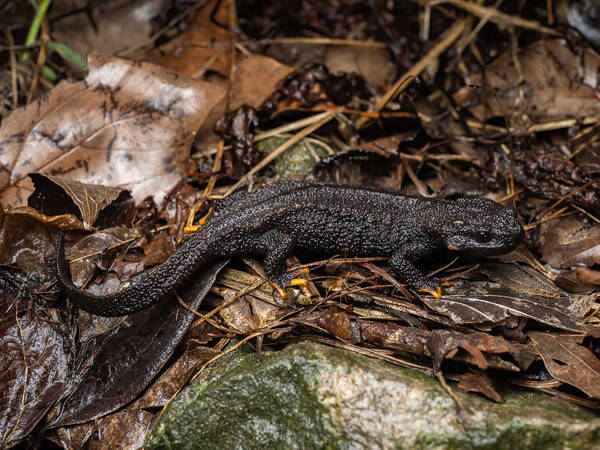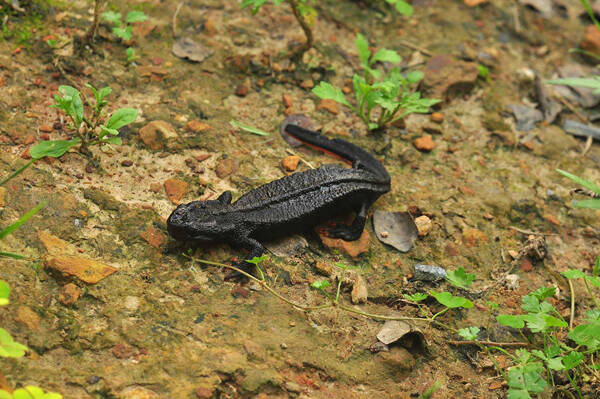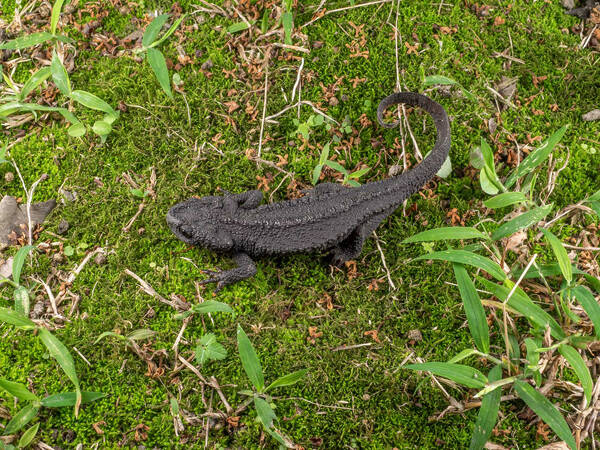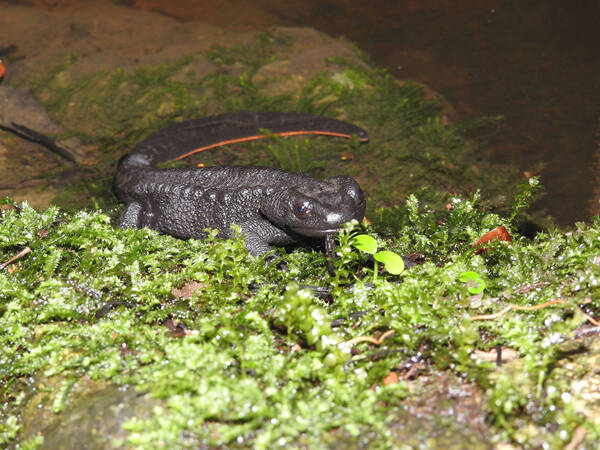Hynobius amjiensis
IUCN
LCBasic Information
Scientific classification
- name:Hynobius amjiensis
- Scientific Name:Hynobius amjiensis,anji hynobiid
- Outline:Urodela
- Family:Caudata Hynobiidae
Vital signs
- length:153-166mm
- Weight:
- lifetime:
Feature
The base of the tail is nearly round, gradually flattened backwards, the dorsal fin fold is low and obvious, and the tail tip is blunt. The skin on the back of the body is smooth, with a longitudinal skin groove from behind the eyes to the neck fold; there is a ridge groove in the center of the back.
Distribution and Habitat
Endemic to China, distributed in Anhui (Qingliang Peak at the junction of Jixi and Shexian) and Zhejiang (Anji, Chun'an).
Lives in mountainous areas at an altitude of about 1,300m.
Appearance
The head is oval and flat, with the length slightly larger than the width; there is no lip fold; there is no fontanelle, and the vomerine tooth row is V-shaped. The trunk is thick and slightly flat. The back of the body is dark brown or brown-black, and the abdomen is gray-brown, with no spots.
Details
Anji Hynobius amjiensis is an amphibian of the Hynobiidae family and Hynobius genus, and is endemic to China.
Anji Hynobius amjiensis has very strict requirements for habitat and water. This species lives in the humus layer under the peat moss in the swamp and enters the puddle during the spawning season. Adult salamanders mostly live in the swamps in the valleys on the top of the mountain, surrounded by lush vegetation, with large and small puddles on the ground, with a depth of 50 to 100 cm; they feed on a variety of insects and small animals such as earthworms. After the dissection, the stomach contents were examined and dragonfly larvae, small water beetles of the family Dytiscidae, water boatmen of the order Hemiptera, earthworms, and some fragments of peat moss were found. Earthworms, water worms, mealworm larvae, frog tadpoles, and animal minced meat were all eaten by them when fed indoors.
Anji hystrix breeds and lays eggs in a pond from December to March of the following year. There is a pair of egg-laying bags, one end of which is connected to form a handle and adheres to the water grass. It is 46.0-58.0cm long; the eggs are arranged irregularly, and each female salamander can lay 9-151 eggs.
